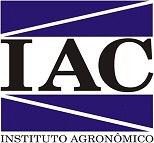Agronomic performance of BRS 423 OL peanuts grown under different sowing densities in Campo Verde-MT conditions
DOI:
https://doi.org/10.17648/sas.v1i1.16Keywords:
Arachis hypogaea L., Population, ProductivityAbstract
Peanut culture is well adapted to growing conditions in the state of Mato Grosso, but information to optimize cultural management, such as planting density, is scarce. The present work aimed to evaluate the agronomic performance of BRS 423 OL peanuts, cultivated in different sowing densities under the conditions of Campo Verde-MT. Sowing was done manually on November 22, 2019. The experimental design used was in randomized blocks, with four replications. The treatments were five seed densities m-1: 10, 15, 20, 25 and 30 seeds m-1, with the cultivar BRS 423 OL. The plots were composed by four lines of three meters in length, spacing between lines of ninety centimeters, interval between plots of two meters and a useful plot of 10.8 m2. The harvest was carried out on March 20, 2020, 112 days after the emergency. Dry mass per plant (g), number of pods per plant, final plant stand.m-1, mass of 100 grains (g) and pod yield (kg ha-1) were evaluated. Seed densities influenced dry mass per plant, number of pods per plant, final plant stand.m-1 and mass of 100 grains, so that the lowest densities (10 and 15 seeds.m-1) produced quantities of pods statistically compatible with the highest densities (20, 25 and 30 seeds m-1).
Downloads

Downloads
Published
How to Cite
Issue
Section
License
Autores concordam com os seguintes termos:
a) Os autores mantêm os direitos autorais e concedem à revista o direito de primeira publicação, com o trabalho simultaneamente licenciado sob a LicençaAttribution-NonCommercial-ShareAlike 4.0 International, que permite o compartilhamento do trabalho com reconhecimento da autoria e publicação inicial na Revista SAS. A licença permite o uso, a distribuição e a reprodução irrestrita, em qualquer meio, desde que devidamente citada a fonte. Essa licença permite também que outros remixem, adaptem e criem a partir do seu trabalho para fins não comerciais, desde que atribuam a você o devido crédito e que licenciem as novas criações sob termos idênticos.
b) Não cabe aos autores compensação financeira a qualquer título, por artigos ou resenhas publicados na South American Sciences.
c) Os conceitos expressos nos artigos publicados na South American Sciences são de inteira responsabilidade de seus autores.








